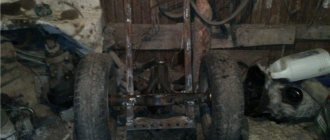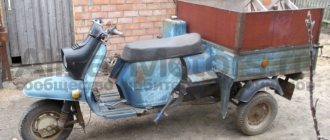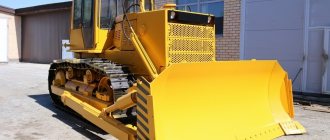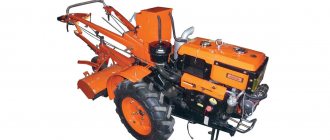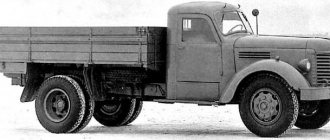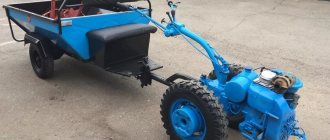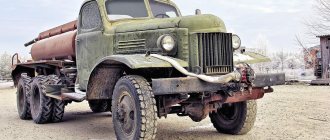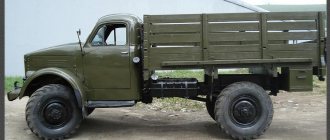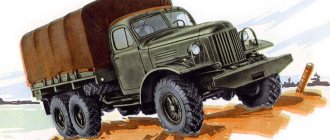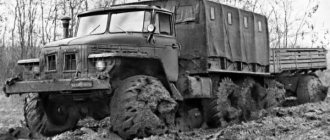The Ant cargo scooter began production back in 1959, and lasted on the assembly line for decades until it was finally discontinued. But the niche of “working” motorcycles even now remains practically vacant, and even attempts by Chinese companies to get into it do not bring much success, so the legendary model may have been officially revived. At least, rumors about this have been circulating on the Internet since 2022. And in 2022, the public was even shown a mini-truck assembled at the Tula plant and in the future intended to replace the famous old man.
Soviet-made passenger scooters
The history of the production of Soviet-made motor scooters dates back to April 1957, when the first Soviet motor scooter “Tula T-200” was released. Its relative was the German Goggo-roller TA200. "Tula T-200" is an 8 hp device. s., a four-speed gearbox, weighing 155 kg, a maximum speed of 80 km/h, fuel consumption of no more than 3.4 liters per kilometer, its acceptable fuel was A-66 gasoline. This is the first and only model of a Tula scooter equipped with a light in the engine compartment. All subsequent models lacked a flashlight. The Tula-200 underwent its first modernization in 1961. The updated version was called "T-200M". The weight of this specimen was reduced to 145 kg, but the power, on the contrary, was increased to 9 liters. With. The reason for this was a change in the cylinder head. The cardinal differences between the new model and the T-200 were that the scooter received a kick starter, a change in the type of front fork and a deformed wing. A few months later, production of a cargo scooter equipped with a side trailer was also put into production. This model was called "T-200K". The body of the stroller was copied from the IZH-56 trailer, the frame had an original design, and the chassis was significantly strengthened.
New generation of scooters
Cargo scooter
Scooter
Cargo scooters "Ant", produced by the Tula Machine-Building Plant named after V. M. Ryabikov, are in steady demand. By increasing performance characteristics and improving machines, the plant strives to implement the suggestions and wishes of consumers whenever possible. Thus, a cargo-passenger modification of “Ant” appeared (“Behind the Wheel”, 1981, No. 12). And in the third quarter of 1983, the TGA-200-01 family was replaced by modernized ones - TMZ-5.402 (cargo-passenger) and TMZ-5.403K/F (with an on-board platform or van, respectively).
Externally, these scooters did not differ from their predecessors, but their design underwent major changes. First of all, they touched the engine. The cast iron cylinder is replaced by an aluminum one with a cast iron liner, which has a three-channel purge. The shape of the combustion chamber, as well as the design of the muffler and air filter, were changed, which made it possible to increase the power to 12.5 hp. s./9.2 kW without increasing operating fuel consumption. With the introduction of an air filter equipped with a paper replaceable element, the wear resistance of the cylinder-piston group has increased significantly.
The increase in power also made it possible to increase the load-carrying capacity of the machines to 280 kg. Accordingly, the chassis elements were strengthened (in particular, the brake drive of the rear wheels), and dampers were installed to soften dynamic shocks during sudden changes in torque in the clutch. The saddle mount has been changed.
The named design innovations improved the technical and operational performance of the Ant.
When designing the Ant-2 family, the production of which has now been mastered, special attention was paid to the artistic and design elaboration of external forms
Plastic parts are widely used: headlight housing, steering wheel cover, tool box cover and others. This not only reduces the weight of the cladding. The unique texture and relief of the surfaces of the parts, their contrasting combination with the main color, made it possible to find interesting color and texture solutions for the appearance of motor scooters.
The shape and dimensions of the saddle and handlebar have been changed (it is of a motorcycle type, adjustable in height and tilt). The car has become more convenient for drivers of different heights and builds.
Other new features include switch blocks, a front brake light switch, a European beam headlight, reflectors, a coil-type throttle handle, turn signal and high beam indicator lights, and an anti-theft device.
The carrying capacity of the Muravey-2 scooters reached 315 kg thanks to the strengthening of the load-bearing elements and the use of new radial tires of the K-96 model. By changing the kinematics of the front wheel suspension, it was possible to significantly reduce the tendency of the fork to self-oscillate (“shimmy”).
Cargo scooters "Ant-2" are produced in three modifications: with an on-board platform (basic) - TMZ-5.403-01K, a van body - TMZ-5.403-01F and a cargo-passenger - TMZ-5.402-01. The basic modification was awarded the state Quality Mark. This year it is planned to produce 80 thousand “ants-2”, of which 60 thousand with a platform body, 17 thousand cargo-passenger, 3 thousand vans. The first two modifications go on retail sale. The price is 1020 and 1050 rubles, respectively.
In the future, all scooters, including Tulitsa, will be equipped with a new engine with a combined valve-piston system to control the intake of the working mixture, which has already been used on the TMZ-5.951 motorcycle. It allows you to reduce operating fuel consumption by 10% and increase engine traction characteristics at low and medium speeds.
A few more words about the Tulitsa passenger scooter. Its power unit and cladding have also been modernized to ensure maximum unification. In the near future we plan to equip the Tulitsa with a more modern hood. The main characteristics of the machine have not changed, but the dry weight has been reduced by 3 kg. The index of the modernized “Tulitsa” is TMZ-5.301-01, the price is 475 rubles, the annual production volume is 7 thousand.
V. PUDOVEEV, chief designer Y. POZDNYAKOV, head of the Tula design bureau
"Tourist" time
The year 1967 was marked by the release of a new scooter model by the Tula plant. It was called "Tourist". During the production of the Tourist, all the shortcomings in the T-200 and T-200M were taken into account and improved. The scooter became more controllable, its power was increased to 11 hp. s., and the speed is up to 85 km/h. Acceptable fuel for the “Tourist” was gasoline of at least 72 marking. The body of the scooter has also been modernized and has become much more durable. In 1971, the release of “Tourist-M” was organized. This model no longer accepted fuel below the 76th marking, and the maximum engine power increased to 12 hp. s., which was reflected in the speed – 90 km/h. "Tourist-M" also received a new muffler solution. In 1978, the Tula plant released another modernized version of the scooter. "Tulitsa" had a power of 14 hp. s., a maximum speed of 97 km/h and a weight of 140 kg. The external design of the scooter has undergone virtually no changes, except for reducing the length of the muffler and some other little things. The final modification of the Tula scooter was made in 1986. The model was named "Tulitsa-02". She weighed 134 kg. At a maximum speed of 100 km/h it had a power of 14.5 hp. With.
Ant's predecessors
Each of the above passenger-type scooters was later converted into a cargo scooter “Ant”, the technical characteristics of which were radically different from those of a passenger scooter in the presence of a body. All produced cargo scooters, as well as passenger scooters, bore various individual indices. Already in 1957, the progenitor of the Ant, the TG-200, saw the light of day. On its basis, the production of motor scooters “TG-200F” (with a van body) and “TG-200I” (isothermal van) was established. All modifications and changes that can be traced from model to model of passenger scooters were consistently and immediately reflected in cargo models. The only thing worth paying special attention to is the gradual increase in the load-carrying capacity of the body.
The main disadvantages of a scooter and its modernization
The Ant scooter, like any technology, in addition to its positive qualities, also had disadvantages. At the same time, the existing shortcomings could be attributed both to structural ones, originally inherent in the device, and to operational ones, arising during the operation of the equipment.
According to reviews from owners, structural defects that required rework or the most frequent repair of a particular unit include:
The birth of the first "Ant"
The first motor scooter "Ant" model "TGA-200" was launched from the container in 1968; it became a cargo copy of the "Tourist" (1967). The carrying capacity of the previous TG-200 was increased in this configuration to 250 kilograms; the designers placed a spare tire and a toolbox under the body. By 1980, the model’s carrying capacity was increased to 255 kilograms (“TGA-200-01”). In 1986, “Ant-2” (“TMZ-5.403-01”) was “born”. This is a cargo scooter based on the Tulitsa-2 passenger car. He became the owner of a new cladding model, different from the previous one. Its carrying capacity was increased to 320 kilograms. In 1988, the share of “Ants” among all cargo-type scooters produced in the USSR and abroad was 84%, which indicates the extraordinary popularity of the model. Even today, when the production of “Ants” of both well-known models has long been discontinued, spare parts for them can be purchased not only in Russia, but also in factories in Poland, the Czech Republic and China.
Dimensions, speed and maneuverability
The Ant is not very fast, but this is greatly compensated by its cross-country ability, provided by ground clearance of 115 mm at maximum load. As for weight, with a length of 270 cm and a width of 125 cm, it is only 280 kg, which is much less than many modern motorcycles. Thanks to this, in the event of a problem, the owner can easily “lay” his “iron horse” on its side for repairs. The designers of the scooter have done everything possible to increase its maintainability. For example, when changing a tire or tube, you do not need to bead the wheel; you just need to unscrew the bolts on it.
Current cost
Nowadays, it is not so easy to find such a tricycle. And the point is not that there are very few of them. True connoisseurs of Ant are not going to part with it. After all, there is actually no worthy alternative for the money that can be earned from the sale. And in general, the segment of three-wheeled household assistants is very limited. An alternative can only be some Chinese tricycle. And despite all Ant’s shortcomings, in a number of parameters he outperforms the modern Chinese.
And those who decide to sell a scooter put an average price tag of 30 to 40 thousand rubles on it. The price is quite fair. Although some may disagree with this.
The Ant scooter is a real hard worker
The height of the scooter when loaded (with a van body) is 156 cm, while without a van body it is only 118 cm. With a 12 hp engine. With. it has a carrying capacity equal to its weight of 280 kilograms, which, with its maximum speed of 60 km/h, sets it apart not only from other examples of its time, but also from many modern cargo scooters. This is due not only to the technical characteristics, but also to the reliability and quality of the materials used in the design.
Advantages and disadvantages
The few weaknesses are more than offset by numerous advantages. Simple and in some ways even primitive, this three-wheeled workaholic is capable of doing a huge amount of work with minimal effort. And only for this alone can he be forgiven for his imperfections.
Advantages
- Incredible endurance . For many owners, with proper attention and maintenance, it works for decades without any serious breakdowns.
- High load capacity . You can easily carry a third of a ton at a time.
- Good cross-country ability . Rough terrain is quite tough for him, even with a load.
- Economical . This is important for regular use.
Flaws
- The advanced age of all surviving specimens, which inevitably leads to various breakdowns from time to time.
- Exhaust and engine volume . To put it simply, it makes a lot of noise and on long journeys it is very annoying.
- Periodically arising problems with the brake system of the rear wheels.
Updated "Ant" with a roof
The year 2009 was marked by the fact that JSC AK Tulamashzavod attempted to resume mass production of cargo scooters of the Ant type. On its website, the plant management presented drawings and a sample of the new product - “GTS-1”, equipped with a cabin.
A real treasure of the Tula Machine-Building Plant named after. Ryabikov's scooter was Ant. In post-Soviet times, this model was half-forgotten, but in recent years, fans of rare motorcycle equipment can proudly state: the legendary cargo moped is triumphantly returning to the market.
Today, Ant scooters, the cost of which is more than affordable, are intended for the individual needs of fans of Soviet technology. They are used quite widely in rural areas, in summer cottages.
Modifications
The Ant motorcycle, in addition to the standard one, had several other interesting modifications. For example, in the mid-nineties a model was released with a plastic cabin. Another, cheaper variety was produced with removable windshields. Among the other brothers of the Tula brainchild, we can highlight the Ant-4 motorcycle. Its engine, designed for eighty thousand kilometers, ran on diesel fuel. In addition, this model was equipped with a noticeably more spacious cabin. The Ant motorcycle, a photo of which is kept in the plant museum, could tow up to six hundred kilograms of cargo, so it was supposed to be used not only in urban conditions, but also during rural work. However, things did not go further than development.
Today, many fans of this rare vehicle buy Ant very cheaply, restore it, modernize it to their liking, and sometimes even perform tuning. And he will be a reliable assistant in the household for a long time, especially in rural areas.
general information
The Soviet cargo scooter has a reliable metal trike, made in the form of a platform with a tailgate. Ant's trike is quite roomy. The platform's carrying capacity is 250 kilograms, which allows the Ant scooter to be actively used for household needs. Thus, a cargo scooter allows you to transport:
Motor vehicles are distinguished by maneuverability and unpretentiousness. In the garage, the Ant scooter takes up about the same space as a bulky motorized vehicle with a sidecar. Ant's turning radius is about 3.5 meters.
Characteristics of the Ant scooter
In winter, a cargo moped operates using a mixture of M6/3-10G/1 engine oil and A-76 gasoline, and in summer it requires the M8B grade.
If we compare the Ant scooter with a sidecar motorcycle, then in terms of operational fuel consumption the advantages will be on the side of the former. Cargo moped -171, eats -187, 8 liters/100 kilometers. It is also much lighter than a motorcycle with a sidecar - its weight is 240 kilograms.
Owner reviews
This one is in the garage; it is unknown when it was released; the documents were lost a hundred years ago. Grandfather drove it, dad too, now I drive it in the summer, when my mother-in-law is pottering around in the garden, and she needs to bring manure, hay, or something else. This fiend of Soviet industry is already 30-40 years old, apparently, but it is still rolling around, and in my memory it has never been seriously repaired at all! The mileage, of course, is ridiculous, God forbid 1000 km per season, but I rarely drive empty, I mostly carry junk, and probably with an excess, because... I never actually measured it, of course. This thing, it seems to me, will even survive the third world war. Ivan, Borisoglebsk.
A truly indispensable household assistant, it’s a pity they don’t make new ones like this anymore. In fact, you can load as much as you want, so much that it simply won’t fit in the body to break something, although the overall dimensions of the platform allow you to load a lot or more. You can see from the photo, although overall the dimensions are small, it easily fits into a Soviet garage on the side of the car. Vasily, Kirov.
Absolutely indestructible pepelats, starts even in winter, turning radius is surprisingly modest. One of the downsides is that it is sometimes difficult to get along dirt roads, since the front wheel does not go along the ruts, but between them. In general, you can find fault with a lot of little things, but for the time when it was released, I think it has no shortcomings. Alexey, Bologoe.
Specifications
The Soviet moped, which has recently enjoyed great popularity, has the following technical characteristics:
- Length - 2680 millimeters.
- Width - 1250 millimeters.
- Height - 1075 millimeters.
- Dry weight - 240 kilograms.
- Load capacity - 250 kilograms.
- Speed - 25-35 kilometers per hour.
- Engine type is 2-stroke, power is 11 l/s.
- Transmission - 4-speed gearbox.
- The brakes have a diameter of 15.0 centimeters. Drum-type, each wheel has a mechanical drive.
Device and technical parameters
The design of the Ant scooter was quite simple and consisted of the following main parts:
- engine;
- frame;
- transmission and suspension;
- electrical equipment;
- brake system;
- body.
Such a simple design of the Ant 2M 01 scooter and its wide unification with the two-wheeled Tulitsa (Tula) model allowed the owners to carry out repairs themselves.
The TMZ Ant motor scooter had the following technical characteristics and operational parameters (data for modification of the Ant 2M motor scooter are given in parentheses):
- Drive – 3x2.
- Load capacity – 0.25 t (0.28 t).
- Engine:
- type – petrol two-stroke,
- ignition – electronic;
- number of cylinders – 1,
- volume – 0.20 l,
- cooling option – forced air,
- power – 11.0 l. With. (12.5 hp),
- carburetor - K-36G,
- fuel – a mixture of gasoline and oil (1/33).
- Dimensions:
- base – 1.78 m,
- length – 2.68 m,
- width – 1.25 m,
- height – 2.16 m,
- track – 1.05 m,
- ground clearance - 0.12 m.
- Transmission:
- type – mechanical,
- number of gears – 4,
- reverse gear - through a reverse gearbox,
- Switching method: foot pedal.
- Common data:
- weight – 0.24 t,
- maximum speed – 60 km/h, (62 km/h),
- fuel tank volume – 13.0 l,
- fuel consumption – 6.2 l, (6.0 l),
- wheel size – 4.00–10.
Maintenance and repair
Thanks to its light weight, this moped, if necessary, can be laid on its side -187, even alone. Also, given that Ant disc wheels consist of 2 halves bolted together, replacing a damaged tire is quite simple. To connect the tube and the spare tire, it is necessary to separate the parts of the removed wheel.
Motor scooter repair Ant
Tools
In order to properly repair a Soviet moped, you will need the following tools:
- double-sided wrenches (set), 4-22 millimeters,
- screwdrivers - 3 pcs. (large, medium, small),
- hammers, 2 pcs. (100 and 300 grams),
- combination forceps,
- wooden stick,
- wire cutters,
- pliers,
- socket wrenches (4 pcs.),
- velvet files - 2 pcs. (flat).
Diagnostics
The Ant scooter must undergo regular maintenance. This is necessary for two reasons:
- This will improve performance characteristics and thereby make the model more reliable and durable.
- Timely diagnostics will allow the owner of such a rare motor vehicle as the Ant scooter to avoid an accident.
Unfortunately, not every owner of such a Soviet rarity as the Ant motor scooter regularly visits the service. Often, 171 units of equipment and 187 units of destroyed equipment are received for repair.
Scooter maintenance
Professional servicing of Ant is a series of operations through which the scooter remains in impeccable condition. Scooter Ant needs:
- daily cleaning,
- washing,
- lubrication,
- oil change,
- adjusting brakes and breaker,
- changing used tires.
If maintenance is not regular, the Ant scooter will require major repairs, which implies a serious financial and time investment.
If a scooter requires urgent replacement of a damaged or worn part, then repair work cannot be avoided.
It is important to remember that only a highly qualified specialist should repair a scooter, who always has the necessary tools at hand.
A Soviet scooter in most cases undergoes one of three types of repairs:
If a scooter needs routine repairs, it does not require much time or removal of a large number of parts. If the Ant scooter requires average repairs, then the owner must take care of disassembling the engine or some elements of the chassis. If the Ant scooter needs a major overhaul, this means that it is time to completely disassemble the chassis or engine and replace all worn parts. To avoid risks, without sufficient qualifications, major repairs should be entrusted to an experienced specialist.
Motorcycle legends of the USSR -
We bring to your attention a review of the legendary tricycle Ant . This Soviet cargo moped with three wheels has earned wide popularity among the residents of our country almost from the moment of its release. First of all, the vehicle was highly appreciated due to its affordable price and versatility. In addition, the performance of the bike stood out. With a weight of 240 kg, the vehicle could transport loads weighing 250 kg, as a result of which it became an indispensable assistant in agriculture.
And today the Ant scooter is highly valued among our compatriots. Its functional parameters have not lost their relevance today. As a result, in rural or summer cottages you can quite often find such a tricycle.
Peculiarities
The Ant cargo scooter is quite easy to maintain. If it breaks, you can turn it on its side and make repairs or replace parts. However, it cannot be called economical, since a 2-liter single-cylinder engine consumes as much as 8 liters per 100 kilometers , and after wear of the piston system it is 10 liters. However, at that time the cost of gasoline was low, so there were no problems with operation.
The simplicity of the motorcycle’s structure does not require any special knowledge of a mechanic, because even to remove the tire there is no need to re-mount it. Simply unscrew the bolts located in a circle. These types of features of the moped allow repairs to be made anywhere, without special equipment. Which is very convenient, because it’s no secret how often Soviet equipment breaks down. However, in case of serious engine and chassis breakdowns, which occur quite often, the knowledge of a mechanic is sometimes simply necessary.
If necessary, you could choose a moped with the most suitable configuration. Thus, models with an additional seat for a passenger and models with a closed body were released.
The Ant scooter currently has many analogues in Asian countries. Road congestion in Asia has made the cargo moped one of the most popular models for hard workers. It allows you to easily navigate narrow alleys and significantly reduces travel time. The Chinese analogue and the original Ant scooter, although they do not have significant differences in appearance, are strikingly different in quality.
How much does the Ant scooter cost?
At the time of release, such a device cost about 775 rubles. (Soviet).
The price was quite low, thanks to which the vehicle became widespread among our residents. Now the cost has not gone up much, so you can buy Ant motorcycles at a very affordable price. On the other hand, the production of such bikes has long ceased, so now you can choose a suitable model exclusively on the secondary market.
Motor scooter Ant: technical characteristics
Among the most important parameters of this technique, the following are worth highlighting:
- length – 268 cm;
- width – 125 cm;
- height – 107.5 cm;
- body dimensions – 125*113 cm;
- maximum load capacity – 250 kg;
- type of power unit - two-stroke, single-cylinder;
- engine volume – 199 cm3;
- power – 11 horses;
- maximum speed is 60 kilometers per hour.
Many supporters of domestic vehicles are confident that the characteristics of the Ant scooter are in no way inferior to their European counterparts.
A few words about the trailer
You can also make a trike yourself. The spaciousness of the body is indicated by the photo of the Ant scooter. A standard trailer consists of:
- stroller frame;
- L-shaped steel bracket;
- two clamps;
- tubular struts.
When working on the trike, it is very important to ensure that the trailer shell does not come into contact with the bracket. To increase the rigidity of the body, a steel gusset can be welded. In addition, it is important to make a homemade trike with an opening and removable tailgate. The sides and bottom are covered with boards. Additionally, the trailer is equipped with lighting equipment (dimensions, brake lights, turn signals).
Main advantages of the model
Among the reasons why the Ant motorcycle has enjoyed and enjoys wide popularity are:
- reverse function, which greatly increases the maneuverability of the vehicle (especially important when parking and performing other complex maneuvers);
- a motor that starts with a starter;
- small turning radius of 3.5 m. Thus, you can ride a tricycle even along narrow rural streets;
- light weight compared to sidecar motorcycles;
- affordable price for the vehicle.
Among the disadvantages are high fuel consumption, fairly frequent breakdowns, as well as poor maneuverability on soft ground (especially when the body is loaded).
What is the model
The Ant motorcycle is distinguished by a reliable metal trike, made in the form of a platform with a tailgate . Moreover, such a trailer is large enough so that many different items can fit into it. The vehicle is widely used to transport:
- seedlings;
- building materials;
- fertilizers;
- beehives, etc.
On the other hand, the Ant moto is quite maneuverable and unpretentious. The turning radius of the bike reaches 3.5 m. The vehicle does not take up much space in the garage.
In the winter season, the Ant moped should be filled with a mixture of motor oil and 76 gasoline. In the summer he drives on M8B fuel.
Compared to sidecar motorcycles, this bike is not only lighter, it also takes less fuel. At the same time, the vehicle cannot be called economical. Ant 2 requires about 8 liters of mixture to operate, and after the piston system wears out, this figure increases to 10 liters.
The Ant cargo scooter has a fairly simple design.
As a result, you do not need to have any special knowledge or skills to repair it. In addition, repairs can be performed almost anywhere, without having to go to a workshop. At the same time, such a device, like a large number of post-Soviet vehicles, breaks down quite often.
You may also be interested in: Modern Ural motorcycles and spare parts for them
At the same time, the vehicle looks very modest. Photos of the Ant scooter show us a standard tricycle with a small platform at the back. The designers of the model did not add any special elements - everything was just the most necessary and practical.
Several different configurations were available, including vehicles with an additional passenger seat, as well as a moped with a covered body. At the moment, there are many analogues of the Ant motorcycle, photos of which strongly resemble the original vehicle. This is especially true for eastern countries. Due to increased traffic, three-wheeled motorcycles have become the most popular means of transportation in Asia.
Video test drive of the power of the Ant scooter:
A short summary
So, the Ant moped is a real Soviet classic . At the time of release, this vehicle was one of the best options in terms of price/quality. And now such a bike demonstrates good technical parameters. But, since the motorcycle has not been modernized for a long time, its fuel consumption is very high.
Thus, maintaining such a workhorse will cost a lot of money, so the bike is more suitable for lovers of rare models than for people who are looking for transport for daily use.
Video review of the Ant scooter:
Dynastarter
However, it is not only the engine that can make a motorcyclist clearly see all the components of his motorcycle. The most common problem is a problem with the dynastarter. The engineers of the Tula plant installed it in Muravya, instead of a conventional alternating current generator.
Why is it so important? If you notice a red light on the instrument panel while the moped is running, it means you are running out of charge. This happens because the generator is not producing alternating current. To begin with, in such a situation, it is necessary to check the integrity of the wires connected to the dynastarter and the relay regulator. If everything is in order, then the problem lies directly in the dynastarter. There may be three main causes of problems:
- difficulty in rotor operation (dirt getting into the collector or dust accumulation);
- freezing or wear of brushes;
- violation of the integrity of electrical equipment.
Since in most cases the operation of the dynastarter is difficult due to contamination of the collector, it is worth carrying out a simple disassembly according to the instructions described in the moped operating book. The main rules when working are neatness and cleanliness. After disassembly, be sure to thoroughly rinse all parts in gasoline and lubricate the rubbing parts, and under no circumstances throw away the parts.
